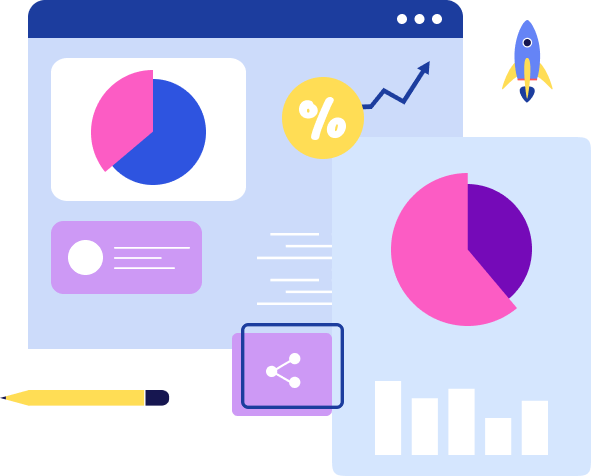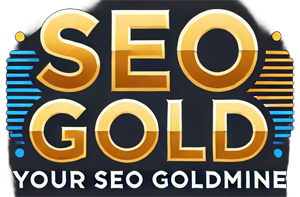Search Engine Orchestration: Harmonize Your Digital Strategy for Maximum SEO Impact
Search Engine Orchestration (SEO2): Harmonizing Every Aspect of Your Digital Strategy
Search Engine Orchestration (SEO2) is an advanced SEO strategy that focuses on aligning all components of your digital presence—content, social media, technical SEO, and user experience—to create a seamless and cohesive online strategy. By synchronizing these elements, SEO2 ensures that your entire digital ecosystem works together harmoniously to drive maximum search engine visibility and engagement. This holistic approach amplifies the overall effectiveness of your SEO efforts and creates a powerful, interconnected strategy that keeps your business competitive in today’s digital landscape.
What is Search Engine Orchestration (SEO2)?
Search Engine Orchestration (SEO2) refers to the coordination of various digital marketing efforts to optimize the visibility, user experience, and performance of your website in search engines. Instead of treating SEO as an isolated tactic, SEO2 integrates it with content marketing, social media strategies, paid advertising, technical SEO, and user engagement metrics, ensuring that every aspect of your digital presence contributes to your SEO goals.
SEO2 focuses on the big picture: understanding how all digital elements—both on-page and off-page—work together to boost your website’s rankings, attract traffic, and convert visitors into customers. By orchestrating all these components, SEO2 helps build a well-rounded, high-performing SEO strategy.
The Key Elements of SEO2
- Content Creation and Optimization Content is at the core of any SEO strategy, and SEO2 ensures that content creation is aligned with your overall digital goals. This involves creating high-quality, relevant, and engaging content that resonates with your target audience while adhering to SEO best practices. SEO2 encourages the integration of keyword research, content marketing, and user intent to produce optimized content that ranks well and keeps users engaged.Additionally, SEO2 emphasizes the importance of ongoing content optimization. This includes updating older content to keep it relevant, expanding on high-performing topics, and ensuring that all content is aligned with the latest SEO guidelines.
- Social Media Integration While social media signals don’t directly impact SEO rankings, SEO2 recognizes the importance of social media in amplifying your content’s reach. By integrating social media strategies with your SEO efforts, you can drive more traffic to your site, increase brand visibility, and encourage backlink generation. Platforms like Facebook, Twitter, LinkedIn, and Instagram can be powerful tools for distributing your content and engaging with your audience.SEO2 focuses on aligning social media posts with ongoing SEO campaigns, using social platforms to promote blog posts, landing pages, or product announcements. This creates a consistent and interconnected digital presence that supports your SEO goals.
- Technical SEO and UX Alignment Technical SEO is critical for ensuring that search engines can properly crawl, index, and rank your site. SEO2 includes optimizing site speed, improving mobile usability, implementing schema markup, and maintaining a clean, efficient site architecture.But SEO2 goes beyond technical SEO to emphasize the alignment of SEO with user experience (UX). A smooth, user-friendly experience keeps visitors on your site longer, reduces bounce rates, and encourages conversions—all factors that indirectly contribute to higher search rankings. SEO2 ensures that technical SEO improvements and UX enhancements work together for maximum impact.
- Paid Search and Organic SEO Collaboration While SEO traditionally focuses on organic search, SEO2 acknowledges the value of integrating paid search (PPC) strategies to complement organic efforts. Paid search campaigns can provide immediate visibility while organic SEO builds long-term authority. By orchestrating paid and organic search efforts, SEO2 maximizes visibility in both spaces.SEO2 also ensures that paid and organic strategies are aligned, using shared keyword data and performance insights to improve results on both sides. For example, keywords that perform well in PPC campaigns can be incorporated into organic content to enhance SEO results.
- Backlink Strategy and Outreach Backlinks from reputable, high-authority websites remain a key ranking factor in SEO. SEO2 integrates a strategic approach to backlink acquisition, focusing on quality over quantity. This includes building relationships with industry influencers, reaching out to relevant websites, and using content marketing to naturally attract links.SEO2 emphasizes the orchestration of outreach efforts with content creation. By aligning your outreach strategy with content promotion, you increase the chances of gaining valuable backlinks that boost your domain authority and search engine rankings.
- Data-Driven Insights and Adjustments SEO2 is not a static strategy—it’s a dynamic, evolving approach that requires continuous data analysis and refinement. SEO2 involves tracking key performance indicators (KPIs) such as organic traffic, bounce rates, conversion rates, and backlink profiles to assess the effectiveness of your SEO strategy.By using tools like Google Analytics, Ahrefs, or SEMrush, SEO2 helps you identify areas of improvement and adjust your strategy accordingly. Whether it’s optimizing underperforming pages, adjusting keyword targeting, or refining your technical SEO, SEO2 ensures that you’re always making data-driven decisions to improve your rankings and user engagement.
Benefits of Search Engine Orchestration (SEO2)
- Increased Search Engine Visibility By aligning all elements of your digital strategy, SEO2 ensures that your website has a stronger and more consistent presence across search engines. Whether it’s through content, backlinks, social media, or technical SEO, SEO2 maximizes your chances of ranking higher for relevant queries.
- Enhanced User Engagement SEO2 creates a more cohesive user experience by ensuring that your content, website design, and user interface are all aligned with SEO goals. This improves engagement metrics like time on site, page views, and conversions, which can further enhance your search engine rankings.
- Improved SEO Efficiency SEO2 streamlines your SEO efforts by coordinating multiple strategies into a single, well-orchestrated plan. This reduces the risk of conflicting tactics or wasted resources and ensures that every part of your digital marketing strategy is contributing to your SEO objectives.
- Long-Term SEO Success SEO2 is a holistic and adaptive approach that focuses on long-term SEO results. By integrating content optimization, technical SEO, user experience, and data analysis, SEO2 helps your site stay competitive and resilient to algorithm updates.
- Amplified Organic and Paid Search Results By integrating paid search strategies with organic SEO, SEO2 amplifies your website’s overall visibility. You can use PPC campaigns to support your organic efforts, driving traffic while your SEO builds authority over time. This synergy between organic and paid search ensures maximum visibility and results.
Implementing Search Engine Orchestration: A Step-by-Step Guide
- Audit Your Current SEO Efforts Start by conducting a comprehensive audit of your existing SEO strategy. Identify areas where different components of your digital marketing—such as content, social media, and technical SEO—may not be aligned.
- Develop an Integrated Strategy Create a plan that incorporates content marketing, social media promotion, technical SEO, and paid search efforts into a unified strategy. Ensure that every component is working together toward common goals, such as improving search engine rankings, driving traffic, and increasing conversions.
- Optimize Content and Social Media Alignment Ensure that your content marketing strategy is fully integrated with social media efforts. Share new content across social platforms and use social media engagement to support your SEO campaigns. Promote blog posts, product updates, or special offers in a way that complements your SEO goals.
- Enhance Technical SEO and UX Conduct a technical SEO audit and make improvements to your website’s speed, mobile usability, and crawlability. Simultaneously, focus on improving the user experience to ensure that visitors can easily navigate and engage with your site.
- Synchronize Paid and Organic Search Develop a strategy that integrates both paid and organic search efforts. Use PPC campaigns to target immediate traffic and visibility, while organic SEO focuses on long-term growth. Share keyword data between PPC and SEO teams to optimize both efforts.
- Monitor and Adjust Regularly Use analytics tools to track the performance of your SEO2 strategy. Continuously review KPIs and adjust your strategy based on data insights. Whether it’s updating content, refining keywords, or adjusting technical SEO, regular optimization is essential for success.
Bring Your SEO Strategy into Perfect Harmony
Search Engine Orchestration (SEO2) is a game-changing approach to SEO that goes beyond individual tactics and focuses on the big picture. By integrating content, social media, technical SEO, user experience, and paid search into a cohesive strategy, SEO2 ensures that every element of your digital marketing works together to drive maximum search engine visibility and long-term success. If you’re looking to build a powerful, sustainable SEO strategy, SEO2 offers the key to success.













